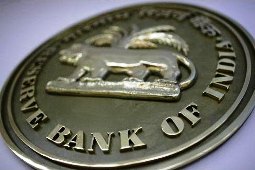 The Reserve Bank of India decided on Tuesday to come out with mid-quarter monetary reviews so that its swift monetary actions in sync with changing economic conditions do not have a surprise element.
The Reserve Bank of India decided on Tuesday to come out with mid-quarter monetary reviews so that its swift monetary actions in sync with changing economic conditions do not have a surprise element.
"The RBI will now undertake mid-quarter reviews roughly at the interval of about one and a half months after each quarterly review . . . By instituting these, it is our intention to take the surprise element out of the off cycle actions," RBI said in its monetary review released on Tuesday.
As per schedule, mid-quarter reviews will be in June, September, December and March, RBI added. It further said that the first mid-quarter review of the monetary policy will be announced on September 16, 2010, and the quarterly review on November 2, 2010.
The mid-quarter reviews are intended to communicate the RBI's assessment of economic conditions more frequently.
RBI's new move assume importance since it has been changing its policy rates and other tools ahead of monetary policy or reviews, which are seen by many as unexpected.
Earlier this month, RBI raised short-term lending and borrowing rates by 25 basis points even when it was to announce its monetary review on Tuesday.
This has surprised many, which saw the move as unexpected though warranted to tame high inflation.
Commenting on the RBI's move, Planning Commission Deputy Chairman Montek Singh Ahluwalia said, "Monetary policy is something unlike fiscal policy, which you do for a year.
"Monetary policy should be adjusted week by week, if necessary. I have never been in favour of fixed dates on which monetary policy changes. Elsewhere in the world, the monetary policy committee meets every two weeks."
RBI further said it will have the flexibility, as always, to take swift ad pre-emptive policy action, as and when warranted by the evolving macroeconomic developments.
Earlier, RBI used to have annual monetary policy and mid-term monetary policy.
As economy became dynamic and globalised, RBI started coming out with annual policy and three quarterly reviews.
Now, RBI will have more frequent reviews of its monetary policy.





